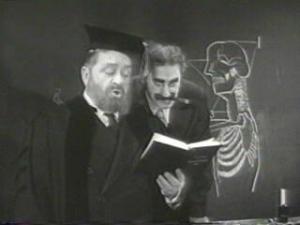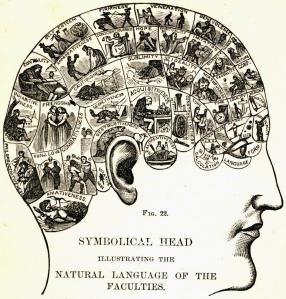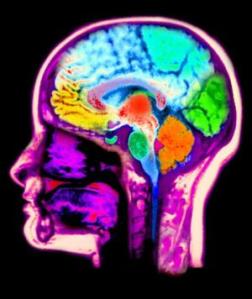by Reni Gorman
Tip #3: Present main points first (the ones you wrote in Tip #2), followed by details, wrapped up by summaries of main points.
Cognitive Psychology: Presenting main points first primes learners and activates associated knowledge pathways. Take the Serial Position Curve into consideration by presenting main points up front, and as part of summaries at the end. Present material using the PQ4R study method (this is a great method, see below for details).
Why (Justification):
When I say: “It is very important to design your course material to facilitate learning with understanding.” Hopefully you deeply processed and understood the sentence and every associated concept you know has just been activated in your brain, this is referred to as associative priming. In addition, activation should spread to the surrounding concepts as well. This is called spreading activation. (Anderson, 2000) Now that you are primed, and have activated your relevant knowledge, you will be much faster at retrieving related knowledge to map new knowledge onto, bring up possible misconceptions, and prepare your mind to learn.
In a study by Meyer and Schvaneveldt (1971) subjects judged associated word pairs such as bread and butter, a lot faster than nurse and butter. These results indicate that when they saw the word bread, it associatively primed the word butter increasing recognition and judgment speed.
The PQ4R study method (Thomas & Robinson, 1972) was designed to help students learn and remember text from a chapter in a textbook. It encourages students to: Preview, Question, Read, Reflect, Recite, Review. To conduct the preview, Anderson (2000) recommends the following: “Read the section headings and summary statements to get a general sense of where the chapter is going and how much material will be devoted to each topic. Try to understand each summary statement and ask yourself whether this is something you knew or believed before reading the text.” (p. 5) It seems that by doing this we are priming ourselves not just for what is to come, but the organization of what is to come, called advanced organizers.
In a study by Frase (1975), subjects who received advanced organizers scored better on tests, then the group who did not receive advanced organizers.

Hierarchical encoding of serial-order information means that “subjects store long sequences hierarchically, with sub-sequences as units in larger sequences.” (Anderson, 2000, p. 132) Therefore, learners create groups and subgroups and organize them hierarchically as they learn to store and later to recall information from memory.
Consider the study conducted by Klahr, Chase and Lovelace (1983) based on subjects speed at recalling certain letters of the alphabet. In the alphabet song, pauses indicate the end of a group and the start of another. [(ABCD, EFG) (HIJK, LMNOP)] [(QRS, TUV) (WX, YZ)] A subject may be given the letter “K” and asked to generate the next letter. Generation times were faster at the beginning of a group and progressively slower toward the end of a group. This represents the front anchoring effect that subjects access the beginning of each group first, then search for the target from there.
“Propositions information can be represented in networks that display the relations among concepts.” (Anderson, 2000, p. 151) Propositional networks are also referred to as a semantic network: of or related to meaning. Presenting all the main points upfront will allow the main points to be the front anchors for the details to come. This will lay the foundation for the conceptual framework (you created in step #1) to be the main organizational network for the information.
How (Application):
1. Create a good clear title for each section of your course that will help get your learners thinking about the information you are about to present. That means using titles that clearly communicate the topic you are about the cover.
A bad example is: Interesting New Findings.
A much better title would be: Interesting and New Findings in How People Learn.
2. Begin creating an advanced organizer by listing your outline with your nice clear titles and the corresponding main points. Remember that each section or chunk has a main point. There are main points for concepts as well as sub-concepts. Tip: if you notice you have too many main points for a section… try to find a logical break and break it up! (Remember +or-7 from tip #2) The main points are very important. If the student never gets past your advanced organizer and only studies the main points what is the most important information that you want them to walk away knowing?
3. Since learners tend to remember information presented in the beginning and, even more so, at the end, it is a good idea to present main points in the beginning and at the end. What you have just created can also be used as your summary. (Later we will add questions to the advanced organizer... making it slightly different from your summary.)
References
Anderson, J. R. (2000). Cognitive Psychology and Its Implications: Fifth Edition. New York, N.Y.: Worth Publishers.
Frase, L. T., (1975). Prose processing. In G. H. Bower (Ed.), The psychology of learning and motivation (Vol. 9.) New York: Academic Press.
Klahr, D., Chase, W. Go, & Lovelace, E. A. (1983). Structure and process in alphabetic retrieval. Journal of Experimental Psychology: Learning, Memory, and Cognition, 9, 462-477.
Meyer, D. E., & Schvaneveldt, R. W. (1971). Facilitation in recognizing pairs of words: Evidence of a dependence between retrieval operations. Journal of Experimental Psychology, 90, 227-234.
Thomas, E. L., & Robinson, H. A., (1972). Improving reading in every class: A sourcebook for teachers. Boston: Allyn & Bacon.






